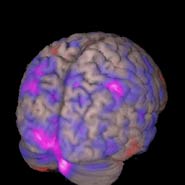For example, when driving the onset of a red traffic light does not always lead to as rapid a response as one might expect from a driver in pressing the brake.
Now researchers from the University of Bristol are to provide a comprehensive account of response time variability, in a bid to explain at a functional level where the variability originates and what neural processes and anatomical structures are involved.
Professor Iain Gilchrist from Bristol is a cognitive neuroscientist who has just been awarded a fellowship by the Biotechnology and Biological Sciences Research Council (BBSRC) to explore the neural basis of response time variability.
“In my research group we focus on the study of the eye movement response,” says Prof Gilchrist, also Director of Bristol Neuroscience. “Eye movements are interesting for a number of reasons. First, they are important for visual perception: we only see fine detailed information when the eyes point directly at a location. Second, eye movements are ubiquitous: we make more eye movements in a day than heart beats. Third, we have a detailed knowledge of the neurophysiology of eye movements control which allows us to link functional and neural explanations.”
For the last ten years, researchers at Bristol University have focused on identifying functional explanations for eye movement responses using mathematical models and behavioural experiments.
The next major step for this research will be to investigate the brain processes that account for this variability. Functional Magnetic Resonance Imaging (fMRI) and Magnetoencephalography (MEG) are both methods for imaging the human brain while participants carry out a task. This allows the brain areas involved in the task to be identified.
The BBSRC Research Development Fellowship will allow Prof Gilchrist and his team to introduce these methods to his research to study the neural basis of response time variability. The fMRI work will also be one of the first projects to be carried out at the new Clinical Research and Imaging Centre, a pioneering collaboration between the University of Bristol and University Hospitals Bristol NHS Foundation Trust providing a £6.4 million facility focused on world-class translational research across the scientific disciplines.
The behavioural experiments will be simple; human participants will be asked to move their eyes as quickly as possible to look directly at suddenly appearing visual targets. The movements of their eyes will be measured to determine when they responded. At the same time brain activity will be recorded to determine the time course and pattern of changes in the brain that determine response time variability.
